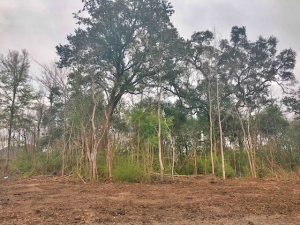The West Bank A Big Part Of New Orleans’ Landscaping
 Tulane senior professor and geographer Richard Campanella has written ten acclaimed books on New Orleans’ historical geography. His most recent book, “The West Bank of Greater New Orleans: A Historical Geography”, looks at the story of New Orleans’ West Bank.
Tulane senior professor and geographer Richard Campanella has written ten acclaimed books on New Orleans’ historical geography. His most recent book, “The West Bank of Greater New Orleans: A Historical Geography”, looks at the story of New Orleans’ West Bank.
S. Stewart Farnet, an architect and preservationist who passed in 2018, was the inspiration to the study of the West Bank. Farnet, who graduated from Tulane in 1955, was a descendant of two very prominent and important families who were part of the development of the West Bank.
Campanella, who last year received the Louisiana Writer Award from the State Library of Louisiana, began his study three years ago. He based his study on the many conversations he had with the late Farnet.
“One of the most fascinating things I learned about the West Bank was just how much I had to unlearn from my prior understandings of Greater New Orleans, because those trends, drawn mostly from the experience of the East Bank, often did not apply to the West Bank,” Campanella said.
In his book on the West Bank, Campanella examines the historical geography. He surveys and explains how the landscaped and cityscape of the West Bank was developed. He discusses the formation of the terrain, environment, land use, jurisdictions, waterways, industries, infrastructure, neighborhoods and settlement patterns, past and present. The book is a timeline that helps to tell the West Bank’s geographical story. Campanella tells the story through the use of maps, aerial images, photographic montages and a detailed historical timeline.
The West Bank is actually a sub-region with tons of history and stands out on its own from the East Bank. The region has a “diversified industrial sector as a riverine, mercantilist and agricultural economy,” Campanella explains. “It served a jumping-off point to the Western frontier and a Cannery Row for the Gulf of Mexico to the south.”
“How this mixed-use area was sculpted by the Mississippi then populated, developed, and governed over more than three centuries is the subject of this delightfully eye-opening study,” Powell wrote. “Of all the fine books Campanella has produced ― and they are starting to mount up ― this one may rank among his most revelatory.”
Click Here For the Source of the Information.

